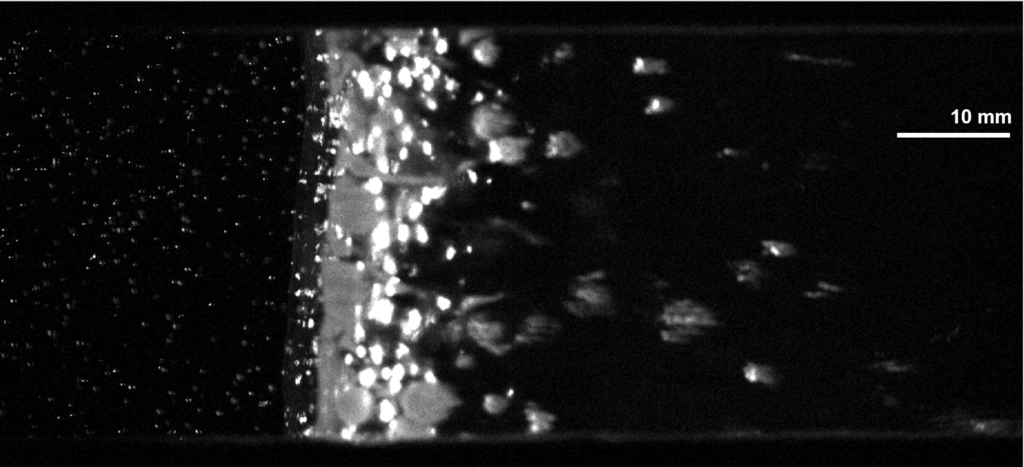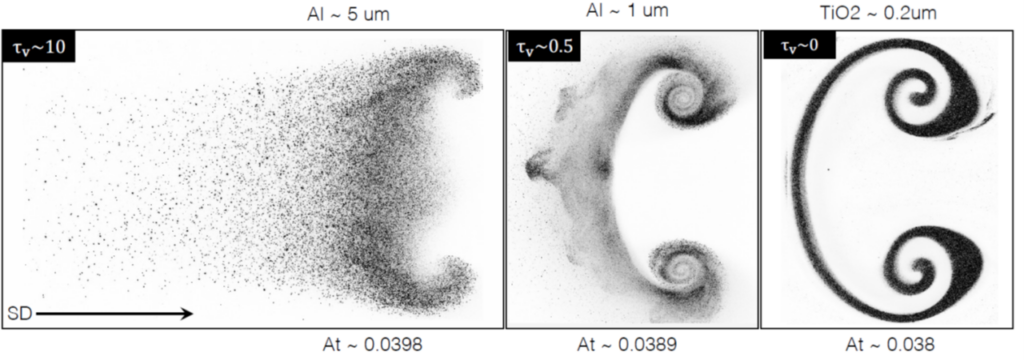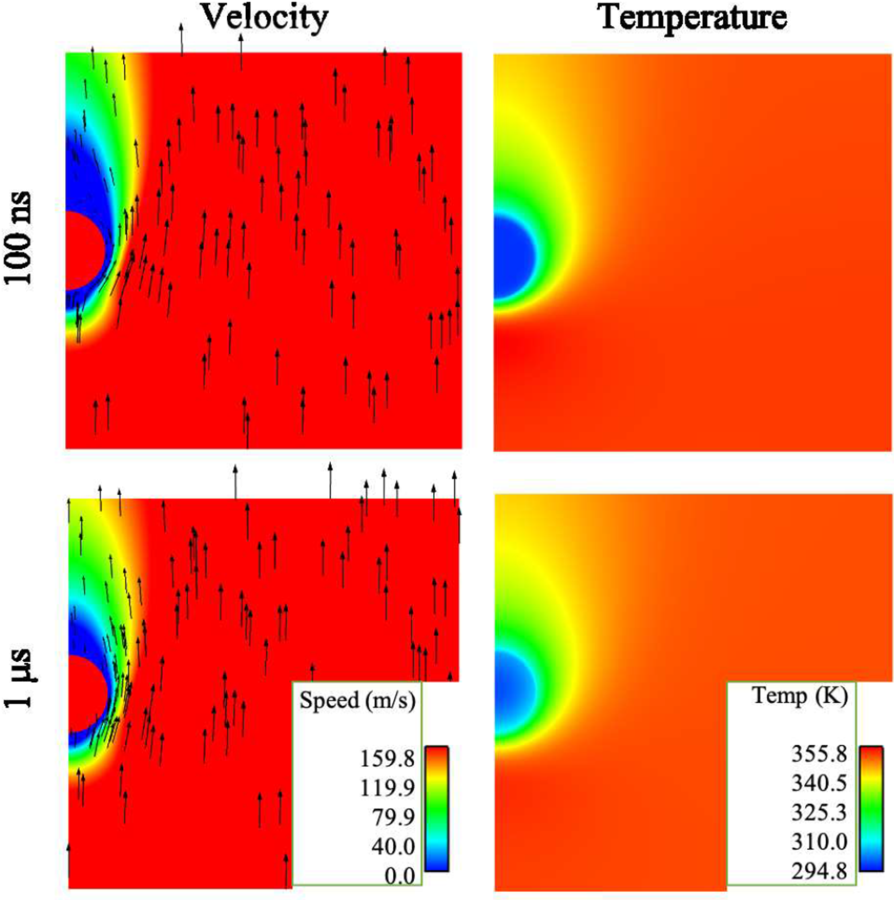Hypersonic vehicles encounter atmospheric water droplets with sizes from microns to millimeters. These droplets are processed in the bow shock, breaking up and evaporating, and may then impact the vehicle surface causing damage. The acceleration created by the 3D bow shock is complex leading to an unsteady acceleration history. We aim to extend the current breakup models to account for complex acceleration histories using experiments, simulations, and hydrodynamic stability theory.
Description
Droplet breakup is a long-studied but complex problem involving several concurrent interfacial processes occurring over a wide range of length and time scales. During breakup, hydrodynamic instabilities (HIs), resulting from strong accelerations, shear, and surface tension forces, act on the droplet surface leading to fragmentation and child droplet formation. Shock-driven droplet breakup is a fundamental and challenging problem in hypersonic flight where it plays a central role in external flow problems, such as impact damage, and boundary layer transition. Atmospheric droplets are present in low concentrations (<0.1% by volume) in a wide range of sizes from sub-micron droplets encountered in upper-atmospheric clouds to millimeter-sized rain droplets encountered near sea-level. Droplet impacts pose a significant threat to hypersonic vehicle aerodynamic and thermal protection systems and can limit weapon availability or flight trajectory due to weather conditions. Droplet-induced erosion can increase surface roughness altering the laminar-to-turbulent boundary layer transition, resulting in additional vehicle heating and drag. The impact of droplets on hypersonic vehicles is complicated by their interaction with the vehicle bow shock, which acts to breakup droplets and mitigate their threat. The kinetic energy of small droplets may be significantly reduced by shock acceleration, breakup, and evaporation, while larger droplets may persist, only undergoing deformation or partial breakup. The bow shock structure is complex, and droplets will travel through a system of shock and expansion waves, with an unsteady acceleration history that is beyond the capability of current droplet breakup models. Predicting droplet breakup and evaporation under these conditions is essential to developing resilient hypersonic vehicles.
We have several collaborators for this research. Prof. Dorrin Jarrahbashi of Texas A&M University performs DNS and Partcile-in-Cell simulations of droplet breakup and impact in hypersonic applications. Prof. Praveen Ramaprabhu of the University of North Carolina in Charlotte performs DNS of droplet breakup and is working with us to develop hydrodynamic instability models for breakup. We also collaborate with scientists at Lawrence Livermore National Laboratory to develop new diagnostic methods and to perform droplet breakup simulations.
Our research in this area has been funded by the Office of Naval research, the National Science Foundation, and Lawrence Livermore National Laboratory.
Images
Mach Number 1.35
Gas Velocity (Vg ~ 180 m/s)
Weber number ( We ~450)
Droplet diameter (170 um)
Further Reading
More to come…



